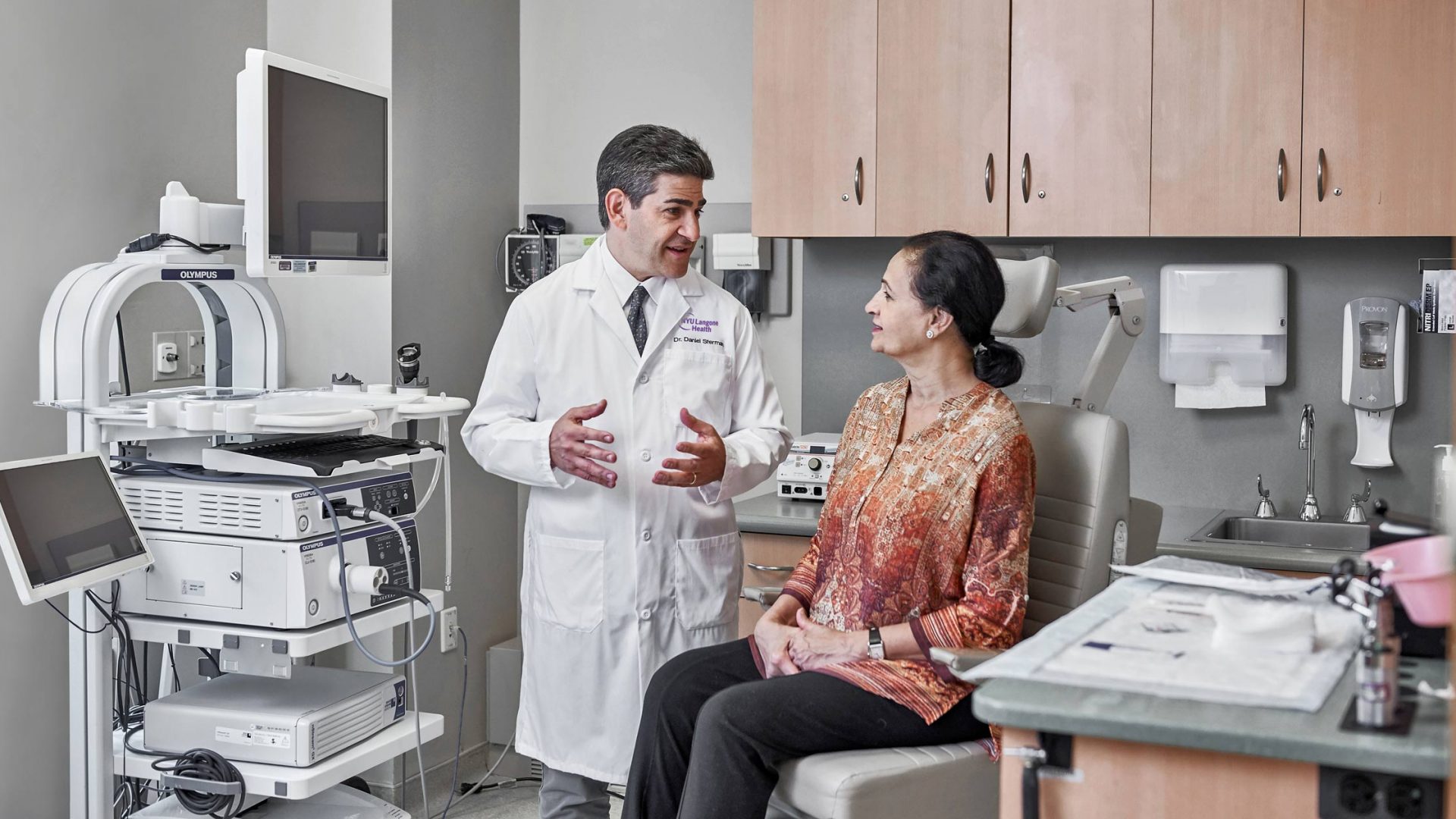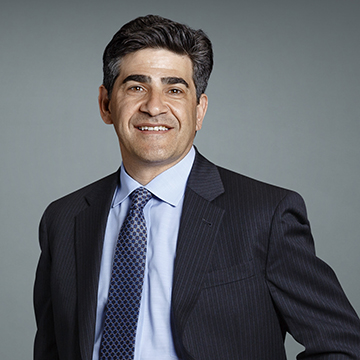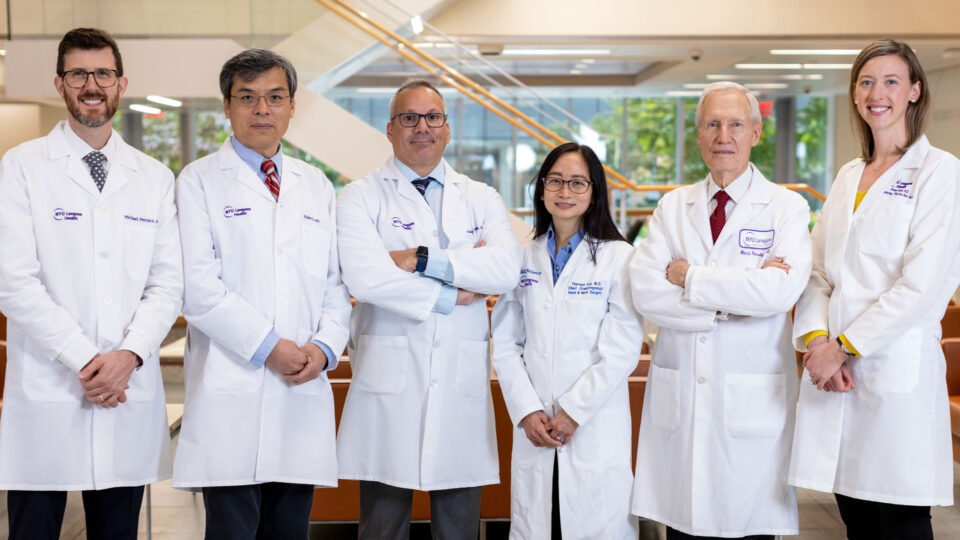As interventional pulmonology began to emerge, Daniel H. Sterman, MD, now the Thomas and Suzanne Murphy Professor of Pulmonary and Critical Care, was just completing his medical training. He had the chance to work with pioneers who built the subspecialty into what it is today—a hybrid of pulmonary medicine and thoracic surgery, where minimally invasive procedures are used to diagnose and treat cancers and other lesions in the chest. Today, Dr. Sterman heads the multidisciplinary pulmonary oncology program, leading multidisciplinary teams in important research and clinical care intitiatives. Here, he discusses the further evolution of the field.
Physician Focus: Dr. Sterman, you’ve been involved in the field of interventional pulmonology since its inception. How have you seen it evolve?
Dr. Sterman: Thirty-five years ago, we were primarily treating obstruction of the main airways and bronchi in cancer and other conditions with the goal of palliation of symptoms. There was not yet the interest in offering minimally invasive treatments for lung cancer and other pulmonary disorders.
Today, interventional pulmonologists are combining leading edge technologies with translational expertise to both palliate the airways and, in the near future, definitively treat cancers and other suspicious lung lesions. We have the capacity to perform more advanced diagnostics and fewer invasive surgeries, and apply therapies directly where they’re needed.
Responding to the COVID-19 Crisis
Physician Focus: Early in the pandemic, NYU Langone Health pioneered a protocol for implementing early, modified tracheostomy in ICU patients. What role did interventional pulmonology play?
Dr. Sterman: This was a major joint initiative led by Luis F. Angel, MD, the director of lung transplantation, to create a pathway for percutaneous tracheostomy for those suffering from COVID acute respiratory distress syndrome. It was really revolutionary in March and April 2020; many centers wouldn’t do tracheostomy or bronchoscopy until there was evidence that there was no active virus in the lungs because of concerns of infection of healthcare providers.
We showed that a tracheostomy within seven days minimized the need for respiratory support and got patients off the respirator, out of the ICU, and into recovery sooner. We were able to create an algorithm that ensured this could be done safely for the patient, provider and ancillary staff in the room—and that we could improve overall outcomes and survival.
Other institutions confirmed the approach and guidelines were published in The Lancet Respiratory Medicine that adhere closely to the NYU Langone Health protocol.
Advanced Diagnostics for Suspicious Lesions
Physician Focus: Your team has been at the forefront of using robotic bronchoscopy and other advanced technologies for lung diagnostics. Can you describe some of these applications?
Dr. Sterman: We were the first commercial site in the United States to implement the IonTM system, Intuitive’s robotic-assisted platform for minimally invasive biopsy in the lung. Jamie L. Bessich, MD and Vivek Murthy, MD are using 3D robotic bronchoscopy to perform minimally invasive diagnosis of lung nodules, reducing the need for more invasive procedures.
Dr. Bessich, working with Daniel A. Orringer, MD in neurosurgery, is also combining robotic bronchoscopy with Raman spectroscopy to evaluate and diagnose suspicious lung nodules without destroying tissue.
This would provide real time, on-site confirmation of the presence of malignancy, allowing for diagnosis and treatment of peripheral lung lesions in a single procedure.
Delivering Therapeutics for Precision Treatment
Physician Focus: You’re leading two clinical trials testing bronchoscopic delivery of therapeutics to boost the immune response rate in lung cancer. What role does interventional pulmonology play in this groundbreaking cancer research?
Dr. Sterman: Interventional pulmonologists are developing the capacity to deliver thermal energy to peripheral lung cancers.
Navigating to a lesion with robotic bronchoscopy, we can confirm we are at the correct location with 3D fluoroscopy and radial probe ultrasound, and in the near future, ablate the lesion with thermal energy such as with a flexible microwave probe.
In the phase II LuTK02 study, one of the first intratumoral immunotherapy trials in lung cancer, we’re testing a therapy called gene-mediated cytotoxic immunotherapy, delivering a novel immunotherapeutic directly into the pulmonary tumor or involved lymph nodes to accentuate the benefits of systemic checkpoint inhibitors in patients who aren’t responding as well as we’d like.
In a separate trial—Bronchoscopic Cryo-immunotherapy of Lung Cancer—we are testing another method for inducing immune responses to lung tumor cells in patients with advanced non-small cell lung cancer.
These techniques may serve as “in situ vaccines.” If provided in addition to systemic therapy, surgery, or radiation, the multistep scheme could offer an important new method for controlling or reversing tumor growth and preventing lung cancer recurrence.
Technology Investments & Expertise
Physician Focus: For this vision to come together, what are the necessary pieces? Do you have the technology armament?
Dr. Sterman: We’ve made a significant investment in the two major robotic bronchoscopy platforms to complement the electromagnetic platforms we already have.
Our clinical research draws on the extensive expertise of our interventional pulmonology program, as well as the Precision Immunology Laboratory and Division of Thoracic Imaging and Perlmutter Cancer Center’s Thoracic Oncology Disease Management Group. It’s a wonderful collaboration and an exciting paradigm in which NYU Langone Health can take a lead role in large trials.
Physician Focus: What are the most exciting opportunities ahead for the growth of the subspecialty?
Dr. Sterman: We are still in the early days of the intratumoral study, but this new modality is incredibly exciting and where the field will be heading. Right now, this is assisting in the treatment of advanced lung cancer, but it could be used to deliver pharmacologic agents such as chemotherapy and immunotherapy, in combination with thermal ablation, for early lung cancer.
Dr. Sterman is a scientific advisor for Candel Therapeutics.






